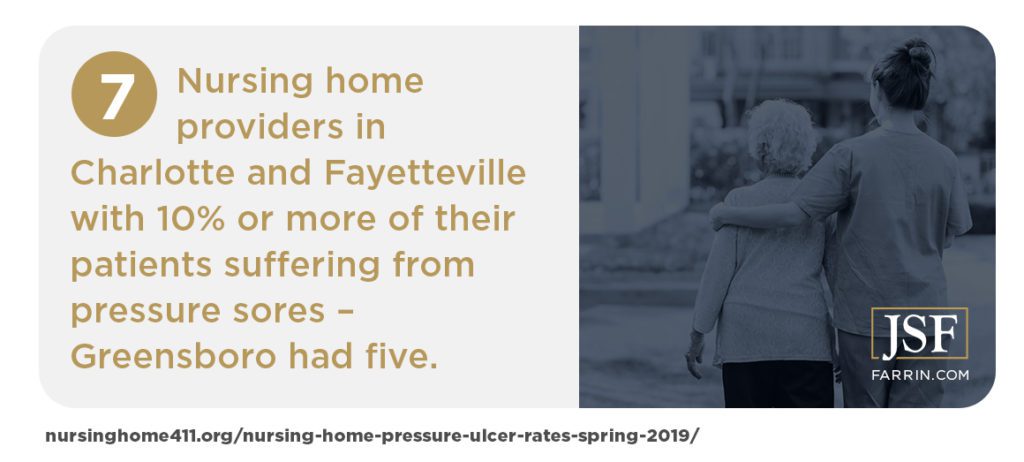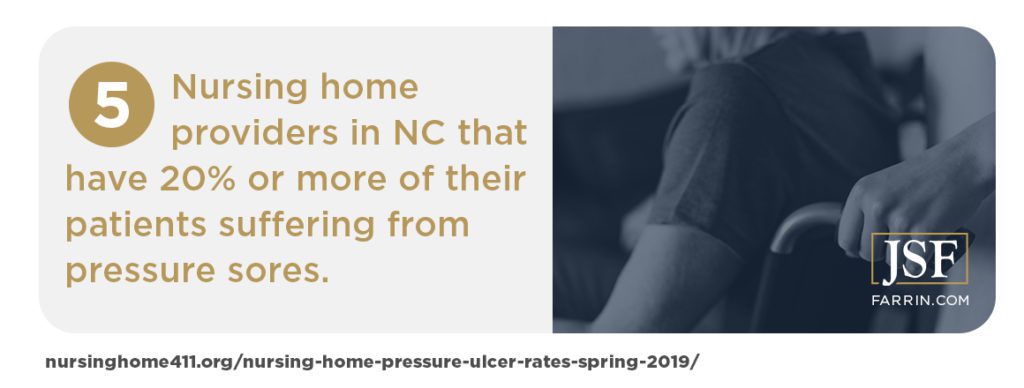Pressure Sores: Are They Painful Symptoms of a Sinister Problem?
People call them a lot of things – pressure sores, bedsores, pressure ulcers, or decubitus ulcers. They could also be a painful warning sign of medical malpractice, or nursing home neglect or abuse. If you or someone you know has experienced these painful sores, it may be time to start asking questions.
What Exactly Is a Pressure Sore?
Pressure sores – no matter what you call them – are caused by constant pressure or rubbing against the skin, especially in areas where the skin covers bony areas like heels, ankles, elbows, and the tailbone. Sometimes, they are the result of an end-of-life condition and are not clinically avoidable. However, there is a reason Medicare considers pressure sores to be a general indicator of quality care.
Pressure sores and ulcers can lead to infection or even death! If you suspect your loved one has developed a pressure sore while in the care of others, contact a lawyer experienced in elder care, neglect, and abuse immediately.
What Causes Pressure Sores?
According to information from the Mayo Clinic, pressure sores have three primary contributing factors:
- Pressure – Constant pressure to a part of the body reduces blood flow to the pressure point. Without enough blood delivering oxygen and nutrients to the skin and muscle tissue in the area, those tissues are subject to damage and can even die.
- Friction – Skin can be damaged by rubbing against a surface repeatedly, especially in the presence of moisture. If the skin is already damaged, friction makes it worse.
- Shear – When two surfaces are in contact but moving in opposite directions, you get shear. Imagine that you’re in bed, but the bed is adjusted to get you into a more seated/reclined position. The bed moves one way but you move another.
All of these are ways of saying that most pressure sores are caused by unrelieved pressure over a bony prominence caused by a lack of turning or repositioning every two hours or so. Given the kinds of conditions common among our frail elderly, many of them face these contributing factors every day. They deserve caregivers who pay attention, know the factors that contribute to pressure sores, and help keep them from developing. If your loved one isn’t getting that care and is suffering, contact a lawyer who is familiar with pressure sores and their root causes.
What Are the Five Risk Factors for Pressure Sores?
There are five primary risk factors for pressure sores – not all of which pertain to movement:
1) Immobility – Far and away one of the most important factors is freedom of movement. People who are immobile due to poor health, spinal injury, or other causes are much more at risk, as they are often confined to beds or wheelchairs much of the time.
2) Incontinence – Extended exposure to the body’s waste products, like urine and stool, weakens and can damage skin. When combined with other risk factors, the possibility of pressure sores may increase, as may the chance for infection.
3) Loss of sensation – Neurological problems, spinal cord injuries, and other conditions can reduce or eliminate a person’s ability to sense the pressure or friction that often causes pressure sores. Thus, someone may not feel the warning signs, or may lack the awareness required to change position when those sensations come.
4) Poor nutrition/hydration – Healthy skin is less likely to break down under the conditions that cause pressure sores. A good diet and properly hydrating helps to keep the skin healthy so it can resist sores.
5) Insufficient blood flow – Diseases that reduce blood flow can contribute to the formation of pressure sores. Conditions like diabetes and vascular diseases can limit the flow of blood – and therefore oxygen and nutrients – through the body, including to the skin.
These risk factors are common in the elderly, especially those who require nursing home care. That’s why it is crucial to maintain contact with your loved ones in nursing home facilities. Neglect and abuse can thrive when there are no eyes on the resident. Simply being present and vigilant could even help prevent the condition in some situations. A lawyer with experience fighting nursing home abuse and neglect can help you understand what could be happening to your loved one.
How Are Pressure Sores Classified?
According to the National Pressure Ulcer Advisory Panel, pressure sores are diagnosed in four stages or levels, although there are some that defy staging.
STAGE 1: The mildest stage. The skin is painful and reddened, and doesn’t turn white when pressure is applied. The skin can be warm or cool, or soft or firm – at this stage, there are variations. Stage one means that a pressure sore is forming.
STAGE 2: More clear and visible evidence. Blisters or open sores form on the skin. The surrounding skin may be red and irritated, and the sore itself painful.
STAGE 3: When the sore deteriorates further, the skin sinks into an open hole called a “crater.” It’s no longer just the skin that is damaged, but the tissue underneath the skin to the point that body fat may be visible to the naked eye. At this stage or beyond, the sore should be treated by a medical provider.
STAGE 4: The pressure sore is so deep that it can damage muscle or even bone. Joints and tendons can also be at risk.
There are two other types of pressure sores that do not necessarily fall within the “stage” structure above. Certain “unstageable” sores are hard to determine because they are covered in dead skin, which can be yellow, brown, tan, or even green in color. “Deep tissue injuries” are sores that develop below the skin. They can come with blood blisters, and the surrounding skin may be purple or maroon.
While not every pressure sore is a sign of neglect or abuse, the more patients in a given facility who suffer from them, the more scrutiny that facility may deserve. For example…
Are Pressure Sores Really a Sign of Nursing Home Abuse?
The Federal Government thinks they can be. According to the Code of Federal Regulations – 42 C.F.R. 483.25(b)(i) – a facility must ensure that, “A resident receives care, consistent with professional standards of practice, to prevent pressure ulcers and does not develop pressure ulcers unless the individual’s clinical condition demonstrates that they were unavoidable…”
The National Law Review states it clearly: “The Federal Government has made a determination that ‘bedsores,’ should not happen in nursing homes.” If a facility sees a sore forming (Stage 1), it should immediately take measures to prevent the sore from worsening. In the absence of a specific medical condition that causes pressure sores, any Stage 2 or higher pressure sores in a nursing home can bring with them the suspicion of neglect or abuse.
Contact an experienced attorney if your loved one is experiencing pressure sores. It may be a sign of neglect or abuse.
What Kinds of Clinical Conditions Can Contribute to Pressure Sores?
Conditions that reduce or impede blood flow can increase the chance of getting pressure sores. As people age, their skin thins naturally, which exacerbates the problem. Reducing blood flow increases the risk even more. Therefore, people with one or more of these issues are at higher risk for pressure sores:
- Diabetes
- Peripheral arterial disease
- Venous insufficiency
- Other vascular diseases
It’s worth noting that certain medications that induce akinesia – the loss of voluntary muscle control – may contribute to the development of pressure sores. Lack of movement is a risk factor, after all.
Don’t Stand for the Abuse of Your Loved One
Whether due to medical malpractice or nursing home abuse or neglect, your loved one deserves better than to suffer the pain, discomfort, and other medical risks that come from preventable pressure sores. They could be entitled to compensation for their medical expenses, pain and suffering, and mental anguish. Contact us immediately at 1-866-900-7078. Together, we can seek to hold those responsible accountable.




